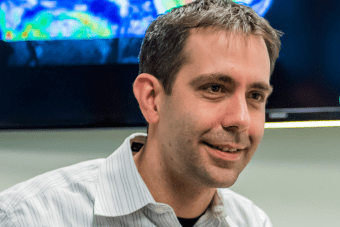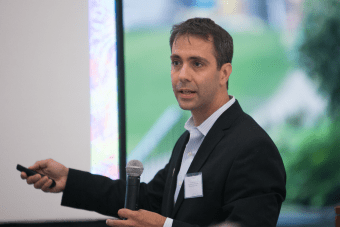Experimentation that surely seemed to creep at a tediously slow rate 30 years ago, for example – think human genome sequencing – today can be rightly celebrated for where it has taken us. Consider that for $200, your entire genetic makeup can be mailed to you in about six weeks.
That said, any time an opportunity comes along that offers the ability to advance that timeline a bit, to perhaps accelerate rate of lab innovation by rewarding high-level curiosity and pushing the scientific envelope, it’s an opportunity the best scientists will jump at.
Jacob Hooker, PhD, is one such scientist, and the Rappaport Research Scholarship in Neuroscience is one such opportunity.
Without the restrictions commonly found in the grant-dependent, soft-money world of research funding, the five-year, $500,000 Rappaport award is especially coveted for the flexibility it offers. And by virtue of his position as the Rappaport Research Scholar for 2016-21, Dr. Hooker is the beneficiary of that flexibility.
“Our system of going after funding at NIH [National Institutes of Health] requires us to often make fairly safe bets,” said Hooker, a chemical neuroscientist at Mass General Hospital, Director of Radiochemistry at the Martinos Center for Biomedical Imaging, and professor of radiology at Harvard Medical School. “Sometimes you have to say, well, this is the science I think will get funded, not necessarily the science I think will actually matter.
“The money the Rappaports provide is totally different. It’s no strings attached, do what you want. It’s worth five times its weight. It sparks creativity, it provides latitude. It’s one of the most treasured awards at MGH, because this sort of flexibility is so rare.”
And Dr. Hooker’s work is well-aligned with the organization that supports it. With the Rappaport Foundation’s focus on mental health and Alzheimer’s Disease, the Hooker Lab’s use of advanced neuroimaging to study the neurological function and connectivity of the human brain is an ideal fit.
His team uses imaging probes to see the chemical function in the brain, and see when it is altered, leading to a better understanding of the underlying dysfunction and, ultimately, better treatment of disease.





